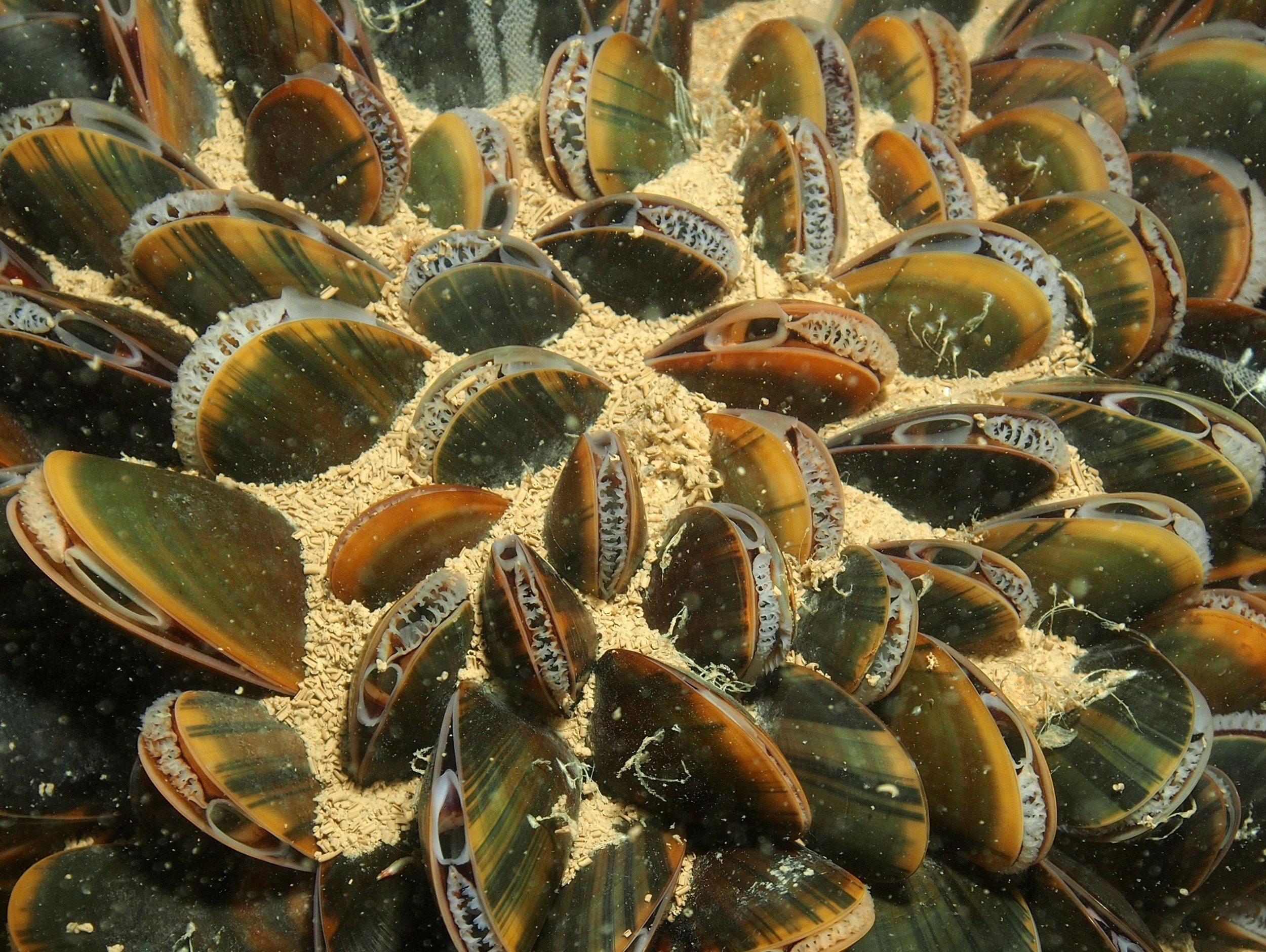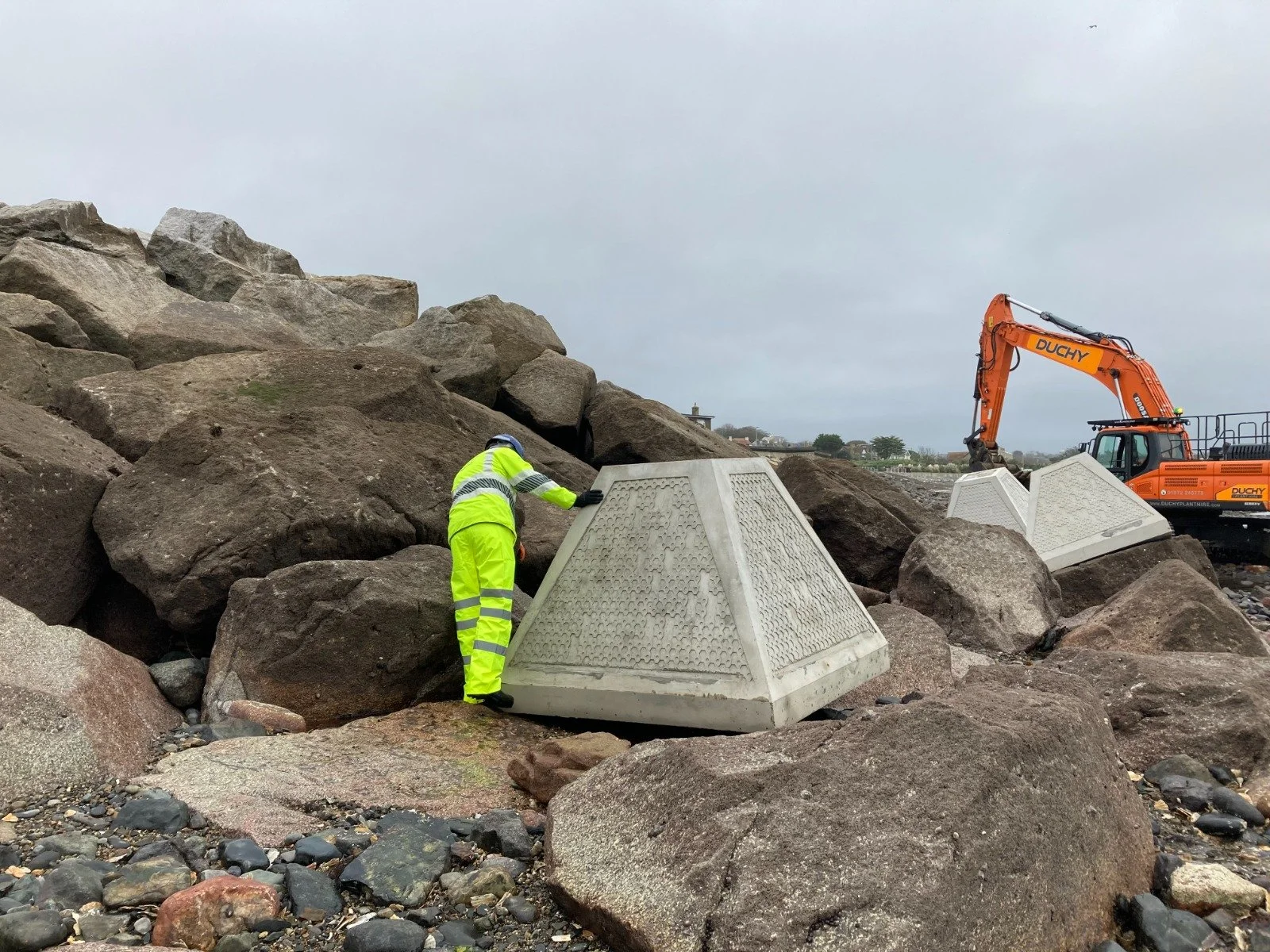
OUR TECHNOLOGY
Our technologies have been developed to provide clients with sustainable, low-carbon, nature-inclusive structures which enhance biodiversity whilst maintaining their engineering function and durability. Under the Environment Act 2021, developments in England which are granted planning permissions will be required to deliver at least 10% Biodiversity Net Gain from January 2024.
Scientific research is at the heart of our development process and has enabled us to develop units which can be customised to each project and allow for biodiversity targets to be achieved.
-

Greening the Grey®
Our surfaces incorporate complex macro and micro-structures which support the bio-colonisation of hard infrastructure. Tunnels, overhangs and pools create spaces for marine life to shelter, increasing their range and abundance. The generation of food sources and niche habitats strengthen the resilience of marine ecosystems and help to ensure the long-lasting success of restoration projects.
-

GeoBlock®
Geoblock is an innovative technology which incorporates 90% inert recycled materials into our products. This involves turning dredged sediment or aggregate by-products from the quarrying and construction sectors into viable, habitat enhancing products. This approach is vital to achieve a circular economy, reducing waste and carbon emissions. We can achieve a carbon saving of up to 78% when compared to traditional concrete, through reducing the reliance on Ordinary Portland Cement and virgin sand.
Our Designs
The presence of textures and imprints on artificial structures has been demonstrated to increase the variety and abundance of animals, plants, and algae which colonize surfaces. Clients can target declining species by mimicking naturally occurring features known to increase food sources, nursery habitats or lost habitats. These details allow our solutions to be tailored to the requirements outlined in an area’s conservation plan.
The presence of varied textures will result in an abundance of habitat for a variety of species, regardless of the visual closeness to naturally occurring sediment. The product’s design and aesthetic are influenced by human preference, as animals do not prefer natural looking features over artificial ones when selecting a site.
Our aesthetic options fall into three categories: Organic, Technological, and Thematic.
Organic
The mimicry of naturally occurring shapes and features, such as rock faces, seaweed fronds, sediments, and shells.
Clients looking to incorporate nature directly into their solution can select this design to increase availability of naturally occurring textures already in the area, or simply because the natural aesthetic is visually appealing while facilitating seamless integration into different environments. It can also increase community engagement by championing native species and habitats.
Technological
Refers to imprints which are influenced by technology or anthropogenic creations.
Common designs include sharp lines, repeating patterns, and inorganic shapes. The protection from predation and desiccation increases biological abundance, while the provision of niche habitats increases variety, leading to biodiversity gain. Clients choosing these designs can select with confidence that biodiversity gain can be achieved through this complexity.
Thematic
Inspired by a theme, depicting icons, animals and features commonly found in the desired area or habitat.
These designs are favoured for use in installations which will be placed near the public’s view, lending themselves to the incorporation of community selected images and increasing community engagement with flood defence and conservation efforts. Examples include beach scenes, trees and flowers or town skylines. Greater complexity of the design will lead to a biodiversity gain as niche species are able to colonize the structures.
To discuss our technology and designs further, contact us.



